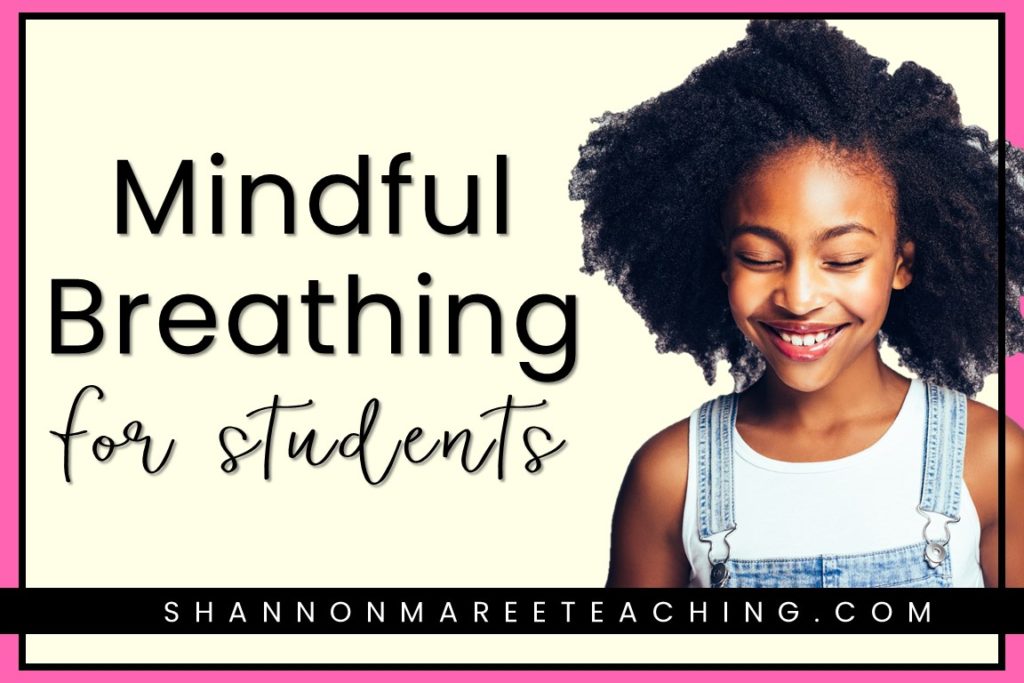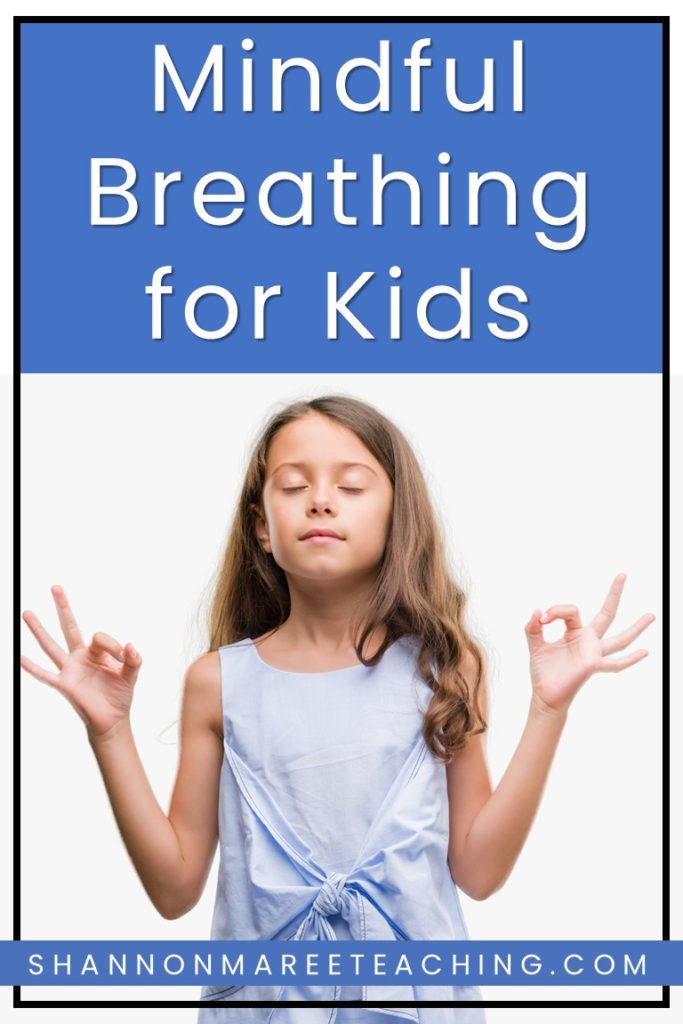
By using simple strategies we can help our students cope with difficult situations anytime, anywhere. One simple way to do this is through mindful breathing for kids.
Why Mindful Breathing?
Mindful breathing is a quick and effective way to help manage our bodies physical responses to stress. When we, or our students are stressed, our heart rate increases, our breathing becomes more shallow, limiting oxygen to our brain and stomach, and our digestive system stops working properly among other things.
In these moments, if we can help our students slow their heart rate and increase the flow of oxygen they’ll be able to calm down quicker, return to a better headspace, and make better choices. We help them do this by teaching and focusing on deep mindful breathing exercises for kids. Taking slow deep breaths while focusing our minds on our breathing can have a tremendous impact on our students. Here are different ways for students to focus on their breathing.
What to Focus On
When practicing deep breathing we want our students to focus on:
- Keeping their chest still
- Taking deep belly breaths
- Feeling their stomach rise and fall
- Slowly breathing in and out, sometimes holding their breath if the exercise calls for it
Mindful Breathing for Kids:
Animals & Familiar Objects
Using animals or familiar actions is a fun way for students to connect to mindful breathing. Here are some of my students’ favorite strategies.
- Bubble or Pinwheel Breathing: Students pretend (or if you’re in school and have the props even better!) to hold a pinwheel or a bubble wand. They take a deep breath then slowly exhale to blow bubbles or turn the pinwheel.
- Rainbow Breathing: You can share videos whole group or post them to your website or digital classroom for students to access. This video by GoNoodle is a hit with my class: https://youtu.be/O29e4rRMrV4
- Flower Breathing: To begin, students take a slow deep breath pretending they are breathing in the scent of a flower. Encourage students to exhale gently to keep the petals intact.
- Wave Breathing: Start by placing palms face down in your lap. As you breathe in raise, your hands slowly in front of your body following the arc up your stomach to your chest. During the exhale keep palms facing down and make a “U” shaped wave pushing your hands away from the body.
- Buzzing Bee Breathing: Students take a deep breath in and hold for 4 seconds. Then slowly release the air while making a soft buzzing sound for 4 seconds.
- Alligator Breathing: Open arms wide as you breathe in. Once you run out of air close your hands quickly like an alligator snapping their mouth.
- If you’re looking for other ways to help your students self-regulate and check-in on them emotionally I’m sharing a great free resource (can be used for distance learning or in the classroom). Click here to grab it for free.
Mindful Breathing for Kids:
Shapes
Another easy way to introduce deep breathing to students is by using shapes, something again very familiar to them. There are a TON of options for this type of breathing, here are a few to get you started.
- Triangle Breathing: For this strategy, students trace a triangle in the air or on paper. Each side represents a 3-second component; breathing in, holding, releasing, repeat.
- Square Breathing: Similar to triangle breathing but we bump it up to 4 seconds for each and students alternate breathing in, holding, releasing, holding, repeat.
- Figure 8 Breathing: As students trace a figure 8 they breathe in during one half of the figure 8 and breath out during the other half.
- 5-7 Breathing: Students simply breathe in for 5 seconds and exhale for 7. Change up the numbers as needed for your students.
- Heart-Belly Breathing: Using this strategy students simply place one hand on their heart and one on their belly as they practice mindful breathing.
Mindful Breathing for Kids:
Active Motions
These are my go to breathing exercises for students who need to move and release some energy while calming down and refocusing. I encourage students to follow up these exercises with one of the previously mentioned breathing exercises to calm their body down as well.
- Tiger Breaths: Students begin in standing position. They take a deep breath in as they crouch down like a tiger. As they jump up they release their breath.
- Drum Breaths: Students pretend to hold drum sticks in their hands and play an imagining snare drum in their lap. They move their hand quickly while taking in a deep breath for 5 seconds, holding for 5 seconds, and releasing for 5 seconds.
- Marching Breaths: Students march in place, making their footsteps as quiet as possible. Students breathe in for 4 marches and then breathe out for 4 marches.
- Campfire Breaths: Students rub their hands together as if they’re trying to stay warm by a farm/start a fire. Breath in for 5 counts and out for 5 counts.
Do you have any favorite mindfulness activities for the classroom? I’d love to chat about it, comment below!
Other Great Links
If you’re looking for ways to further support your students emotionally, you can grab these free social-emotional learning resources by clicking here.
Easily implement social-emotional learning to support students with these fun games, class activities, and read alouds. Click here to read more.













